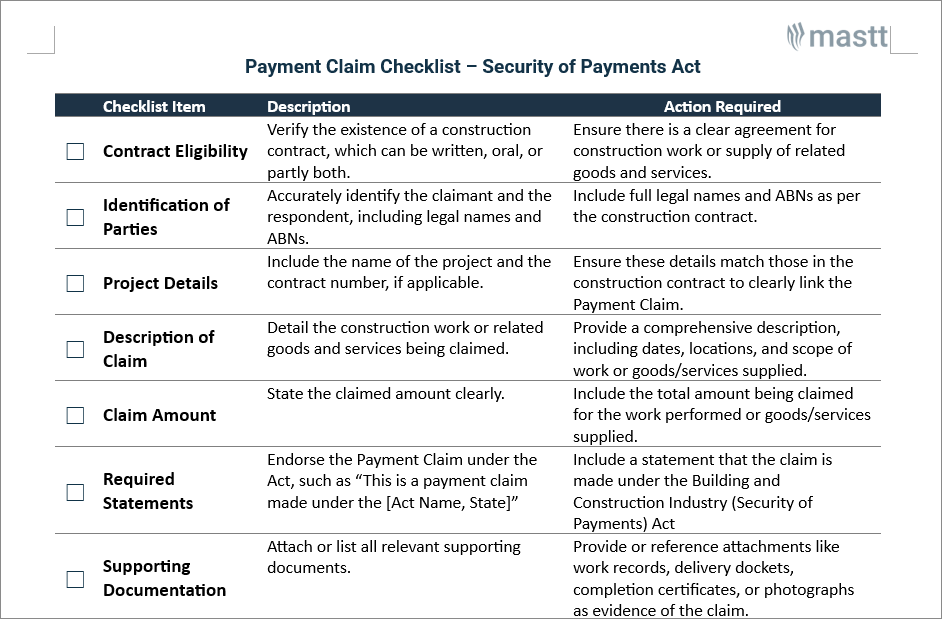In the Australian construction industry, adherence to standard contractual frameworks such as those provided by Standards Australia is common practice.
The AS 4300-1995 General Conditions of Contract (or simply, AS 4300 or AS 4300-1995) is a well-used contract throughout the construction industry.

This article explains the AS 4300 General Conditions of Contract for client-side project managers and introduces the process of managing payments within this contract’s framework.
What is AS 4300?
AS 4300, or AS 4300-1995, is a set of general conditions for construction contracts developed by Standards Australia.

AS 4000 is supposed to provide a balanced legal foundation for the contractual relationship between:
- The Principal (the party commissioning the work, i.e. the owner);
- The Contractor (the party undertaking the work), and
- The Superintendent, a third-party role often represented by client-side project managers.
The flexibility and comprehensive nature of AS 4300 make it suitable for various engagements, but it is mainly used on a lump sum arrangement to perform:
- Design and construction – where the principal provides a design brief (Principal’s Project Requirements) developed by the contractor and constructed.
- Design, development and construction – where the principal provides a more developed design such as a 5% design, 30% concept design, 50% schematic design or further, which is tendered and then developed by the contractor and constructed.
- Design, novate and construct – where the principal develops the complete design but then passes responsibility for the design over to the contractor.
The state library provides a good overview of the various phases here. Note that a modified version also enables early contractor involvement (‘ECI’) in arrangements.

Basic Features of AS 4300
- Fixed Price / Lump sum price. The contractor must execute the work for a fixed price within a fixed timeframe. Changes to the contract price are a variation within a fixed timeframe.
- Design obligations. As we touched on above, the contract requires the principal to provide some sort of design by way of a brief or something more developed.
- Variations. The contract prescribes a process for dealing with variations in the design, which must be directed in writing.
- Payment. Payment is handled by Clause 42 and allows the contractor to claim payment progressively (i.e. ‘progress claim’, but this wording is not used in the Contract) following the schedule. It also has a warning in relation to the Security of Payments Act.

- Fixed timeframe. The contractor must ensure the works are completed by Practical Completion. Else, liquidated damages will apply.
- Extensions of time. The contractor may claim extensions of time to the date for practical completion if it is delayed.
Payment under AS 4300
Payment is handled by Clause 42, ‘Certificates and Payments’ and is a crucial feature of AS4 300, which is why Mastt has digitised the contract and this clause. Within the AS 4300 framework, ‘Payment Claims’ are governed by specific sub-clauses that outline the submission, assessment, and Payment Process, ensuring transparency and fairness for both parties.
1. Submission of Payment Claims to the Superintendent
Under AS4300, Clause 42 outlines how a contractor must deliver claims for payment to the superintendent. These claims must be at the specified time for payment stated in the Annexures, detail the value of work carried out (with evidence) and meet several compliance items outlined in clause 42.1 (best read your contract!). As is always the case, the submission must follow the format and requirements specified in the contract, including any necessary documentation to support the claim. Contractors should also follow the relevant Security of Payment Act requirements when submitting a Payment Claim.
2. Assessment of Payment Claim by the Superintendent
Upon receipt of a Payment Claim, the superintendent assesses the claim. This involves verifying the work completed and ensuring it aligns with the contract requirements. The assessment should be conducted on time to keep the project moving and within the days specified to issue the Payment. This document outlines the amount to be paid in response to the payment claim and the basis for any adjustments or rejections.
3. Payment
Once the contractor has received a Payment Schedule, an invoice will be issued with both the Payment Claim and Payment Schedule to the superintendent for review and assessment before being passed on to the principal for payment.
Conclusion
Despite being created in 1995, the AS 4300 general conditions of contract is still a well-used contract (though, at times, heavily amended) for managing design and construction projects in Australia. Client-side project managers administering an AS 4300 contract should pay attention to their specific contract requirements and stay on top of clause 42 for payments to keep the capital project moving forward.





.jpg)






.jpg)

